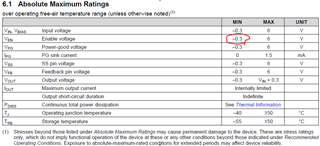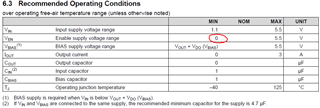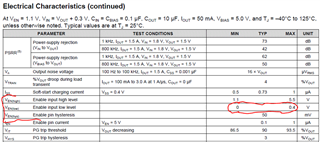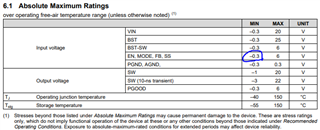Other Parts Discussed in Thread: TPS56C230,
Hi team,
Could you please help me to clarify the Absolute Max. Rating and Recommended Operating Condition spec.?
I can see VEN as an example. If a voltage below -0.3V is applied to EN pin, it may cause permanent damage to the device. And a voltage above 0V is recommended for EN pin. What about the voltage in the range of -0.3V ~ 0V? There inevitably exists the voltage in the range of -0.3V ~ 0V due to undershoot etc. and customer wants to clarify :
1. How to interpret this voltage range - is it within the normal operation?
2. If it's not within the normal operation, how long is this voltage level accepted not to damage the device?



It's even more confusing for customer because other devices such as TPS56C230 puts the same voltage level for both spec.


Thanks,

